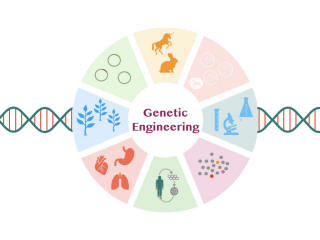Benefits in Many Fields
While the terms “genetically modified” and “genetically engineered” are often used interchangeably, they have slightly different meanings. Both involve altering the DNA of organisms, but genetic engineering uses precise scientific techniques to directly change the genetic structure of living things. In Canada, genetically modified foods are regulated under strict guidelines to ensure they meet safety standards before entering the market.
The Role of Genetic Engineering in Agriculture
Agriculture has always relied on altering the genetics of plants and animals, traditionally through selective breeding. Genetic engineering is a modern extension of this process, allowing scientists to make faster, more targeted changes to crops and livestock. Since 1994, Canada has approved nearly 100 genetically modified foods, including apples, corn, potatoes, rice, soybeans, squash, tomatoes, and canola. These foods are either imported or produced locally by Canadian farmers.
This technology has significantly improved agriculture by:
- Increasing crop yields.
- Making plants more resistant to disease.
- Reducing the need for chemical pesticides and herbicides.
This not only benefits farmers and consumers but also helps protect the environment.
Animal Applications: Genetically Modified Salmon
In 2016, Canada approved the first genetically modified animal for human consumption, a fast-growing salmon. This fish was engineered to produce a natural growth hormone from another salmon species, enabling it to reach market size in half the time of traditional farmed salmon. It marked a major step in expanding genetic engineering from plants to animals and highlighted the ongoing commitment to regulation and safety in Canada.
Medical Advancements Through Genetic Engineering
Beyond agriculture, genetic engineering plays a powerful role in medicine. One of its most promising uses is in gene therapy, where scientists can repair or replace faulty genes that cause disease. For example, in CAR-T cell therapy, doctors take a patient’s immune cells and modify them to better recognize and destroy cancer cells. These genetically engineered cells are then reintroduced into the body to fight the disease more effectively. This treatment gives hope to people with cancers that don’t respond to traditional therapies.
Genetic engineering also offers breakthroughs for inherited disorders. In conditions like cystic fibrosis, gene therapy can deliver healthy genes to improve lung function and reduce symptoms. In sickle cell anemia, scientists can correct the defective gene that causes misshapen red blood cells, leading to fewer complications and hospital visits. This approach also shows promise in treating certain types of inherited blindness, where gene editing can restore partial or full vision.
Biotechnology and Everyday Life: Insulin Production
One of the most impactful uses of genetic engineering has been the production of human insulin. Scientists have engineered bacteria like E. coli to carry the human insulin gene. These bacteria are grown in large tanks, where they produce insulin identical to the kind naturally made by the human body. This method is faster, cheaper, and more reliable than older methods and helps millions of people with diabetes manage their condition.
Genetic Screening and Disease Prevention
Genetic engineering also supports efforts to prevent genetic diseases before a child is even born. During in vitro fertilization (IVF), embryos can be screened for specific disease-causing genes. Only the healthiest embryos are selected, greatly reducing the chances that a child will be born with serious inherited conditions like cystic fibrosis or Tay-Sachs disease. This process—called genetic screening—is becoming more advanced as gene editing tools evolve.
